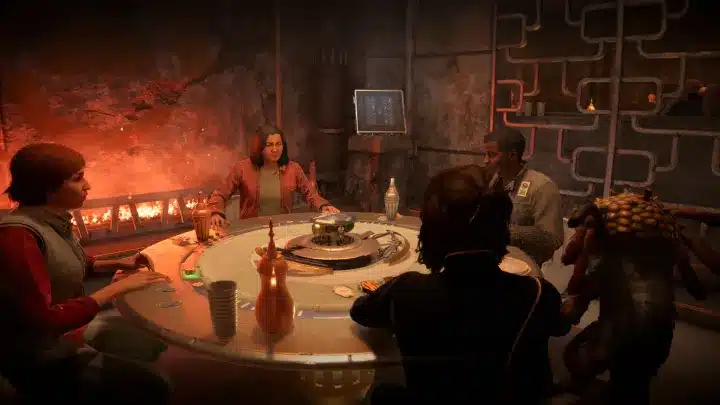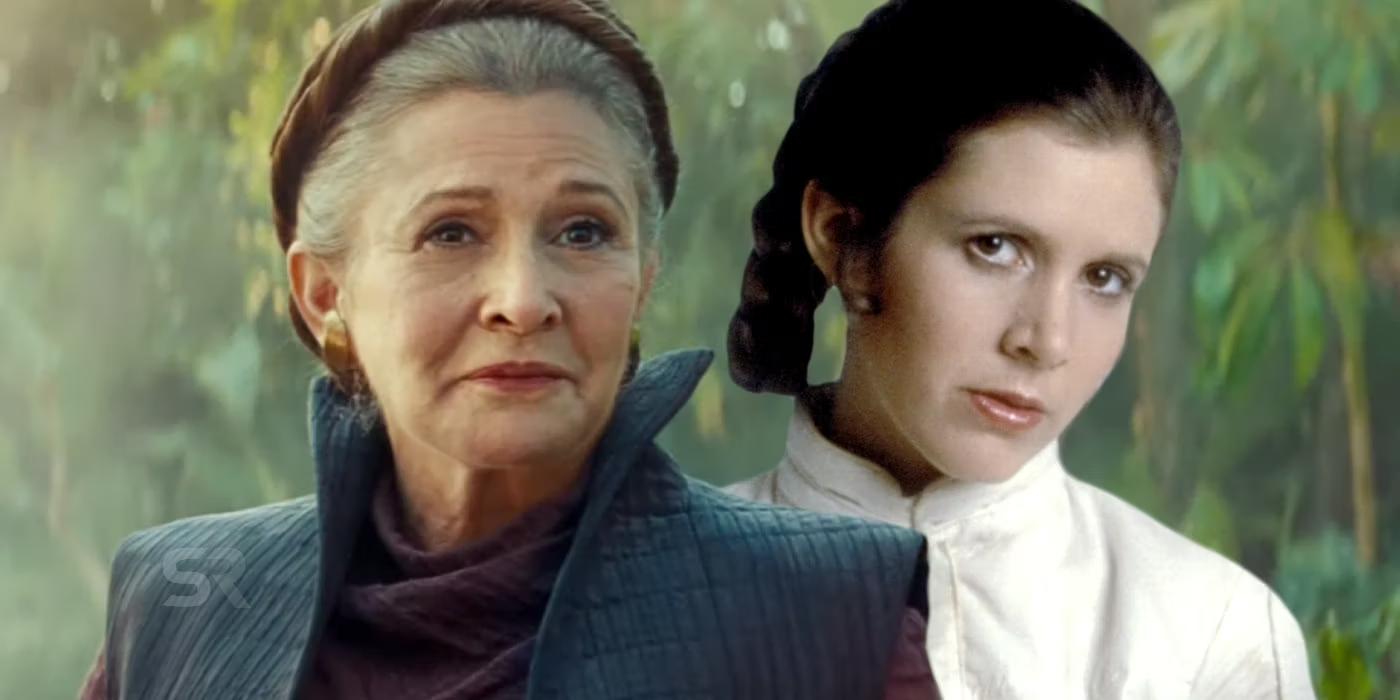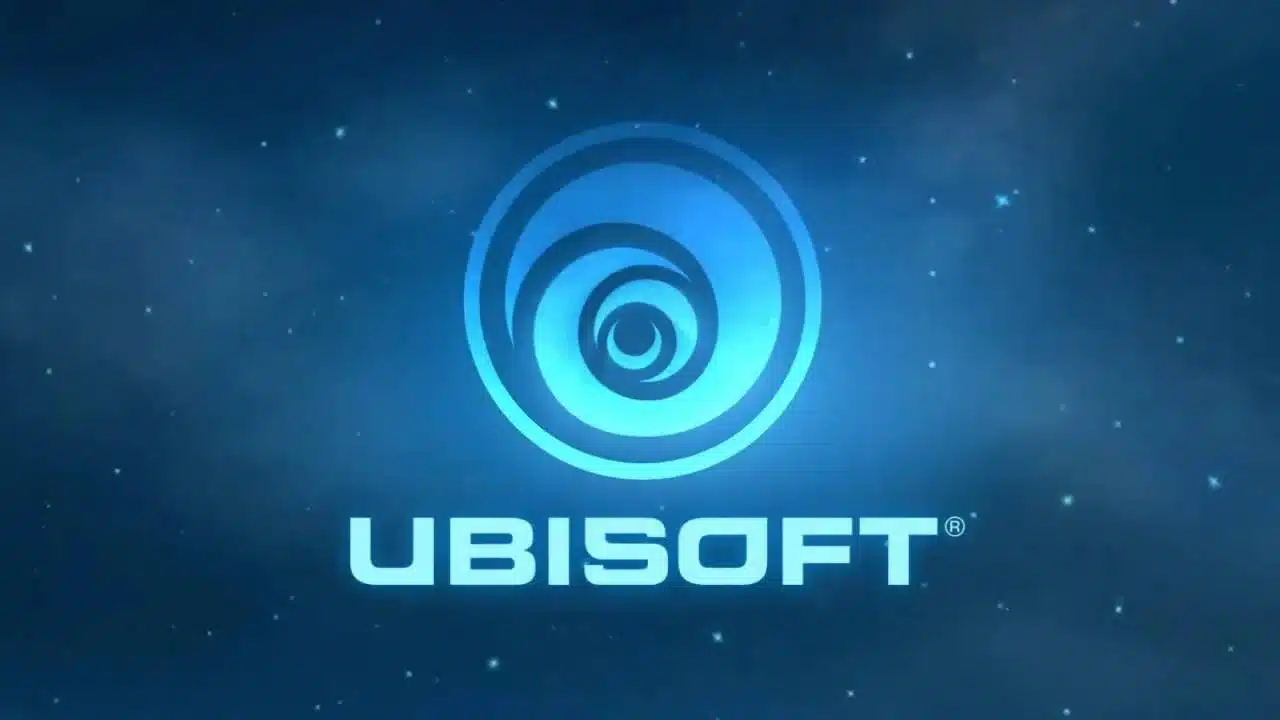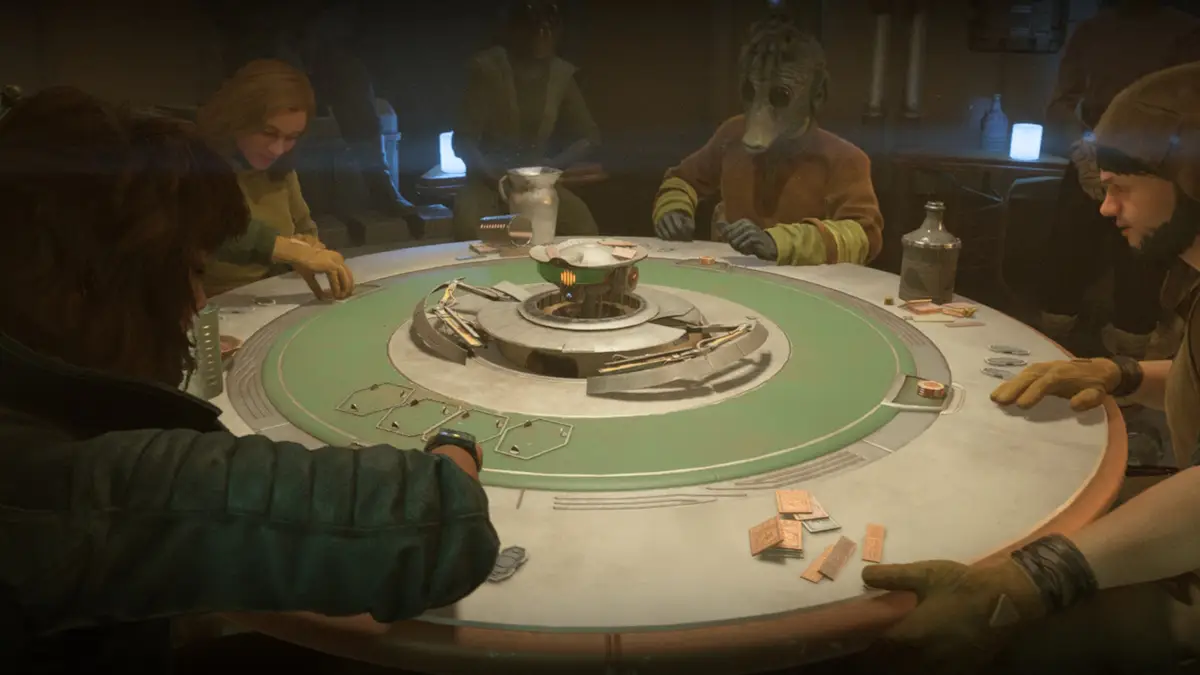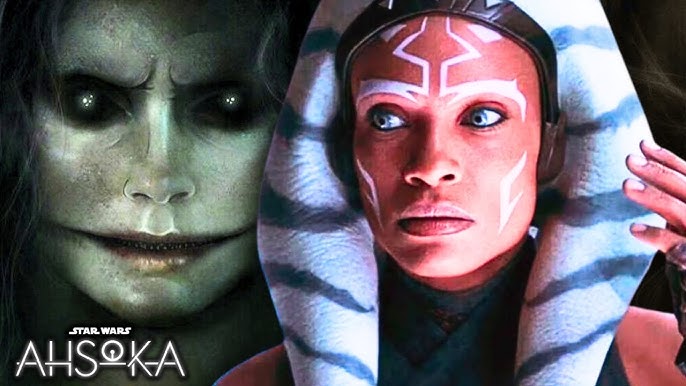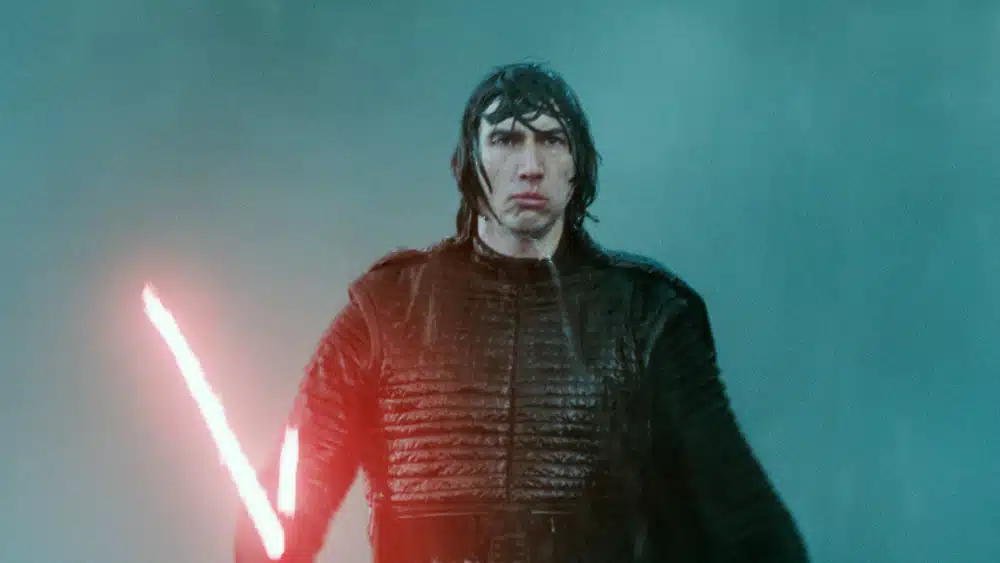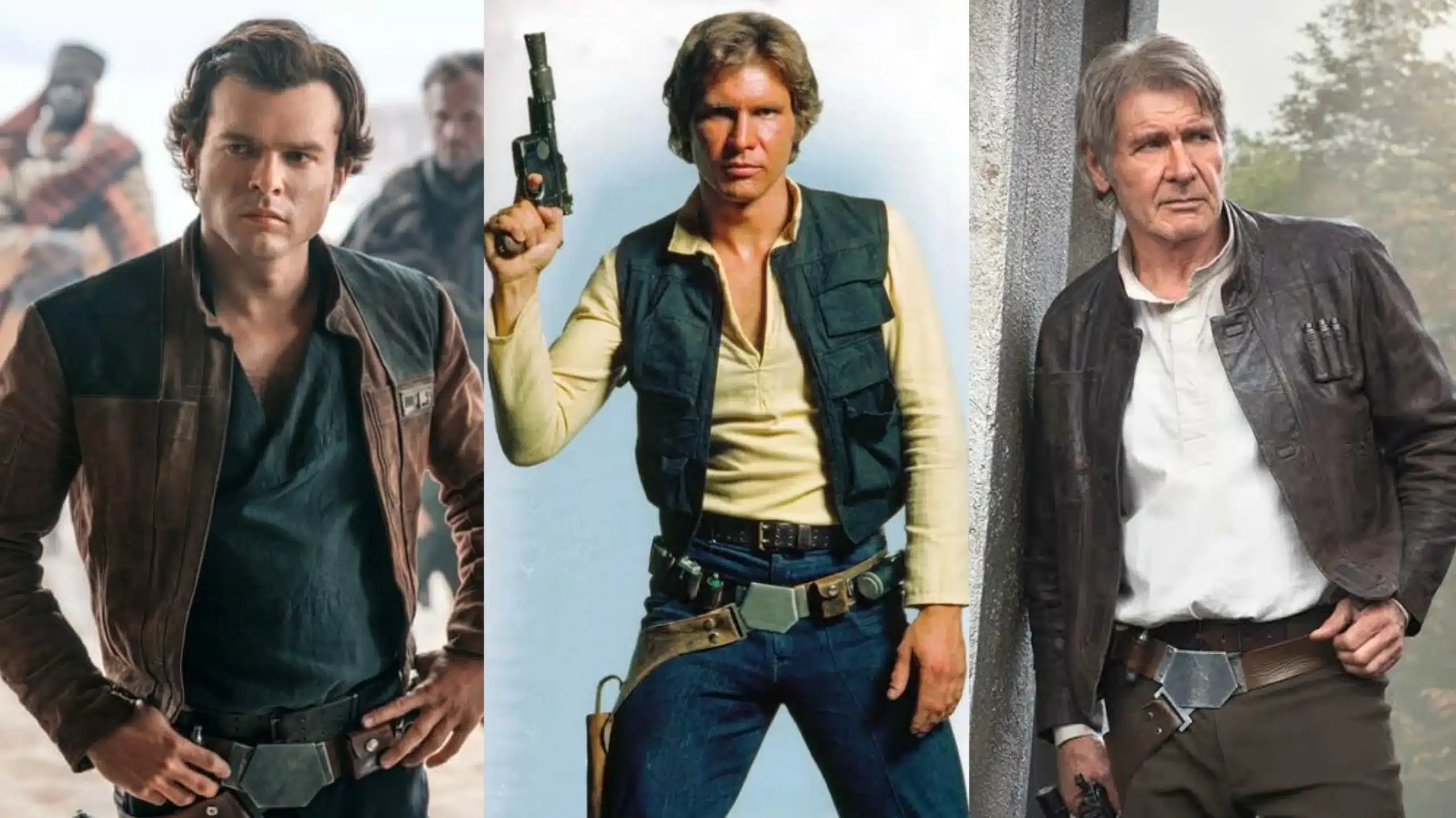When you think of Star Wars, certain names pop up immediately: Luke Skywalker, Darth Vader, Yoda… and then there’s Ahsoka Tano. For those who haven’t been keeping up with the galaxy far, far away, Ahsoka might just be the most important Star Wars character you’ve never heard of. Or, if you’re a die-hard fan, she’s probably your favorite. In either case, let’s break down the story of this fierce, independent, and incredibly resilient Togruta who has taken the Star Wars universe by storm.
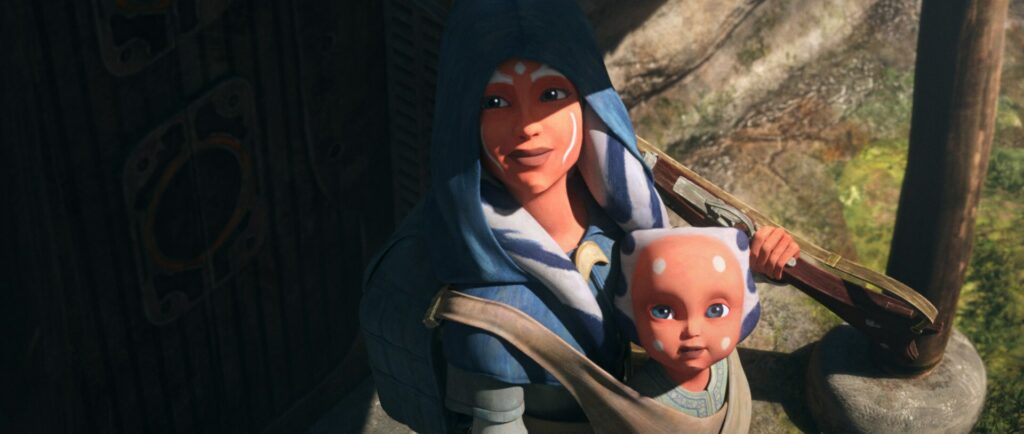
Chapter 1: The Unlikely Beginning of Ahsoka Tano
Ahsoka Tano’s journey in the Star Wars universe started with one of the most unexpected and, frankly, rocky introductions. This young Togruta apprentice was supposed to be the Jedi that no one saw coming—especially since she wasn’t mentioned in the prequel trilogy. Yet, when she first graced the screen in Star Wars: The Clone Wars (2008), fans didn’t quite know what to make of her. Was Ahsoka destined to become a minor sidekick, or could she break out into something more? Let’s just say the odds weren’t always in her favor.
Ahsoka’s Debut: Love at First… Criticism?
When The Clone Wars movie dropped, fans were introduced to a fresh-faced, cocky Padawan with a snippy attitude (hence the nickname “Snips”). Ahsoka’s initial appearance drew mixed reactions. Some Star Wars devotees questioned why Anakin Skywalker, of all people, needed a Padawan. Not to mention, Ahsoka was mouthy, stubborn, and a little too eager for her own good—traits that didn’t exactly win over fans immediately.
Criticism ranged from “she’s too annoying” to “she’s not even supposed to exist!” For a franchise steeped in tradition, Ahsoka’s introduction as Anakin’s apprentice felt like it came out of left field. But here’s the twist: that was the point. Ahsoka wasn’t meant to be perfect. Like all great characters, her imperfections were her foundation, setting the stage for growth that would eventually win over even her toughest critics.
Growing Pains: From “Snippy” to Savvy
Ahsoka’s debut might have been controversial, but over the course of The Clone Wars, her character underwent a transformation. In the early episodes, Ahsoka’s youthful arrogance could make anyone roll their eyes—especially Anakin, who, as a reckless Jedi himself, wasn’t exactly the best role model for patience.
But over time, Ahsoka’s character began to show deeper layers. She developed into a skilled warrior, a compassionate leader, and someone who wasn’t afraid to challenge authority. This progression mirrored the real-life reception from fans, who began to see her not as the annoying sidekick, but as an integral part of the Star Wars saga. Ahsoka, with her dual lightsabers and trademark reverse grip, was fast becoming a force to be reckoned with.
The Ahsoka and Anakin Dynamic: Jedi Duo Extraordinaire
A major part of Ahsoka’s early story was her relationship with Anakin Skywalker. The chemistry between these two characters was electric—and, at times, chaotic. As Ahsoka’s mentor, Anakin was both a guiding hand and an enabler. He pushed her to be bold and daring, often blurring the lines between right and wrong.
Their dynamic was one of mutual respect and loyalty. While Anakin was supposed to keep Ahsoka in check, she also brought out the best in him, acting as a moral compass when his judgment wavered. Their master-apprentice bond became one of the show’s emotional cores, and as fans witnessed this relationship grow, so too did their love for Ahsoka.
The Pressure of Expectations: Filling Big Jedi Boots
Let’s be honest: when you’re introduced as the apprentice to the Anakin Skywalker, expectations are high. Ahsoka had big shoes to fill (or maybe big boots, since Jedi tend to be more practical in their footwear choices). The weight of her role wasn’t just in learning the ways of the Jedi—it was in being the sidekick to the future Darth Vader.
Ahsoka’s growth wasn’t just a plotline; it was a constant balancing act. On one hand, she had to prove herself worthy of being a Jedi Padawan. On the other, she had to navigate the emotional whirlwind that was Anakin’s increasingly turbulent path. The stakes were high, and Ahsoka often found herself caught between her loyalty to her master and the lessons of the Jedi Order. And all this while dodging blaster fire and engaging in epic lightsaber duels. Talk about a high-stress apprenticeship.
From Annoyance to Admiration: Winning Over the Fans
Ahsoka’s journey mirrors a classic hero arc, but with more humor and a fair share of youthful mistakes along the way. She wasn’t perfect, and that’s exactly why she’s so beloved today. Over time, fans came to appreciate her tenacity, her growth, and her relentless pursuit of doing the right thing—even when it meant questioning the very Jedi code she was raised to follow.
As The Clone Wars progressed, Ahsoka evolved from the bratty Padawan fans loved to critique into one of the franchise’s most complex characters. She wasn’t just Anakin’s sidekick anymore—she was a leader, a hero, and most importantly, someone who wasn’t afraid to question the established order. Fans went from groaning when she appeared on screen to cheering her on with every battle and every hard decision she made.
Ahsoka: A New Kind of Jedi (Well, Sort Of)
What made Ahsoka unique was her refusal to conform to the Jedi mold. She was young and unpolished when she was first introduced, and the Jedi Council had their doubts about her, too. In many ways, Ahsoka represented a new kind of Jedi—one who could adapt, who wasn’t afraid to learn from her mistakes, and who wasn’t bound by dogma.
Her early years were spent in the thick of battle, alongside clones, droids, and some of the greatest Jedi in the galaxy. This immersion in the chaos of the Clone Wars gave Ahsoka a perspective that many of her Jedi peers didn’t have. While they were tied up in politics and rules, Ahsoka was out there in the trenches, discovering what it really meant to fight for peace.
In essence, Ahsoka became more than just Anakin Skywalker’s apprentice—she became a new symbol of what it meant to follow the Force, even if that meant walking away from the Jedi Order itself.
Ahsoka’s Design: From Tube Tops to Tactical Gear
Ah yes, the infamous Ahsoka wardrobe. Fans love to debate every detail of the Star Wars universe, and Ahsoka’s outfits were no exception. When she first appeared, she sported what can only be described as a Togruta teenage fashion disaster—a tube top and miniskirt. Sure, it was eye-catching, but not exactly ideal for galactic warfare.
Thankfully, as Ahsoka matured, so did her fashion sense. By the third season of The Clone Wars, she traded in her questionable attire for a more practical and tactical battle outfit. Because let’s be honest: when you’re taking on battle droids and bounty hunters, a tube top just doesn’t cut it. This wardrobe evolution symbolized her growth as a character—from a rebellious teen to a seasoned warrior.
Ahsoka’s design wasn’t just about aesthetics; it was a visual reflection of her journey. Her face markings and head-tails (aka “lekku”) also became longer and more prominent as she aged, subtly showing her transition from youth to adulthood within the series.
In hindsight, Ahsoka’s rocky start was all part of the plan. Her growth—both personal and stylistic—captured the attention and admiration of fans worldwide. What started as a controversial introduction soon blossomed into a legacy that rivals the greatest heroes in the Star Wars galaxy.
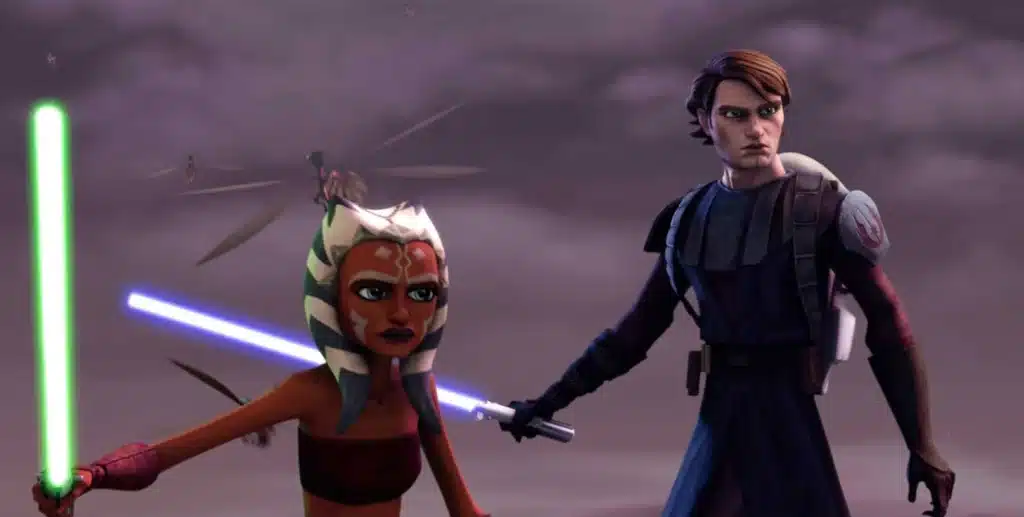
Chapter 2: Ahsoka Tano – The Padawan of Skywalker
Ahsoka Tano’s journey as the apprentice of Anakin Skywalker is one of the most fascinating and pivotal relationships in the Star Wars universe. If you thought having a Sith Lord as a father figure was bad, imagine being trained by the guy who would eventually become Darth Vader! As Anakin’s Padawan, Ahsoka was thrown into the galaxy’s biggest conflicts while juggling Jedi training, lightsaber duels, and, of course, dealing with her complex and unpredictable master.
Ahsoka Meets Anakin: A Master-Padawan Match Made in Chaos
When Ahsoka first arrives on the scene in The Clone Wars, she’s assigned to Anakin by Yoda himself. The Jedi Council hoped that having a Padawan would teach Anakin patience and responsibility. Well, what they got was one of the most intense master-apprentice pairings ever. Ahsoka was eager to prove herself, while Anakin—let’s face it—wasn’t exactly the poster child for following Jedi rules.
Their introduction is about as awkward as you’d expect. Anakin, who’s used to doing things his own way, isn’t thrilled about suddenly becoming a mentor. Ahsoka, meanwhile, sees this as her big chance and is determined to show off her skills. From the start, sparks fly between them—but not necessarily in a bad way. Both are headstrong and fiercely independent, which leads to some early clashes but ultimately forms the bedrock of their relationship.
The Push and Pull: Ahsoka and Anakin’s Complex Dynamic
Ahsoka’s relationship with Anakin was more than just your typical Jedi Master and Padawan setup. Their bond was unique, largely because Anakin was far from the conventional Jedi mentor. Ahsoka quickly realized that Anakin wasn’t going to teach her the same way Yoda or Obi-Wan Kenobi would. Where most Jedi Masters encouraged discipline and calm, Anakin was all about instinct and improvisation. And let’s not forget—Anakin himself had a rebellious streak that was, to put it mildly, legendary.
This made their dynamic thrilling and unpredictable. Anakin pushed Ahsoka to be bold, to take risks, and to trust her instincts. Under his mentorship, Ahsoka became an excellent tactician and a master duelist. She wasn’t just learning the rules of the Jedi; she was learning how to bend them, much like Anakin had done throughout his own career. Yet, even though Anakin’s methods were unorthodox, his care for Ahsoka was undeniable. Their relationship was filled with mutual respect, but it also came with its own set of challenges.
Training Ahsoka: Lightsabers and Life Lessons
If there’s one thing that defines Ahsoka’s training, it’s her signature lightsabers. Anakin didn’t just teach her how to wield one lightsaber—oh no, that would be too simple. Ahsoka wielded two lightsabers, which quickly became her trademark style. The reverse grip she used for her shorter blade added flair and finesse to her fighting style, making her stand out from other Jedi. This dual-wielding technique became a reflection of her master’s bold and aggressive approach to combat.
Anakin encouraged Ahsoka to fight with passion and precision, often leading her into high-stakes situations that tested her abilities. Whether they were battling droids, bounty hunters, or Sith, Ahsoka learned quickly. She wasn’t just becoming a Jedi; she was becoming a warrior. Her lightsaber skills were exceptional, and by the time she fully came into her own, Ahsoka could hold her own against the best of them—including her eventual showdown with Darth Vader.
But lightsaber duels weren’t the only thing Ahsoka learned from Anakin. One of the most important lessons he taught her was to trust herself, even when the odds seemed impossible. Anakin’s own recklessness sometimes rubbed off on Ahsoka, but it also gave her the confidence to make quick decisions in the heat of battle. In many ways, her training was as much about survival as it was about the Jedi Code.
Lessons in Loyalty: Ahsoka and Anakin’s Bond
While Anakin wasn’t the perfect Jedi Master, his loyalty to Ahsoka was unwavering. He stood by her when she made mistakes and defended her against criticism from other Jedi. In return, Ahsoka’s loyalty to Anakin was just as strong. She admired him as a leader and as a friend, even when his decisions seemed reckless or dangerous.
There were moments when Ahsoka questioned Anakin’s judgment, but she never doubted his commitment to her. Their bond was more than just master and apprentice—it was a deep, familial connection. Anakin often treated Ahsoka like a younger sibling, fiercely protective and, at times, overbearing. Ahsoka, in turn, pushed Anakin to be more thoughtful and careful, though she never managed to rein in his most impulsive tendencies.
Learning from Anakin: The Good and the Bad
As Ahsoka grew into her role, she also started to see the darker side of her master. Anakin’s temper, his frustrations with the Jedi Council, and his tendency to go against the rules all influenced her. While Ahsoka learned a great deal from Anakin’s strength and ingenuity, she also witnessed his inner turmoil. Anakin’s anger, his fear of losing the people he cared about, and his willingness to bend the rules would later shape Ahsoka’s own journey.
Ahsoka learned to be resourceful and decisive, traits she would rely on later when she left the Jedi Order. But she also understood the danger of letting emotions cloud judgment, something Anakin struggled with throughout their time together. In a sense, Ahsoka’s training under Anakin gave her the tools to survive on her own, but it also exposed her to the vulnerabilities of the Jedi and the inevitable flaws in their system.
Battles and Bonds: Ahsoka’s Role in the Clone Wars
Throughout the Clone Wars, Ahsoka and Anakin fought side by side in numerous battles, from the planet of Christophsis to the Siege of Mandalore. These intense combat situations allowed Ahsoka to prove her worth not just as a Padawan, but as a leader in her own right. Anakin often trusted her with important missions, and Ahsoka quickly rose to the challenge, leading clones and strategizing in ways that even surprised her master.
But it wasn’t all business. The camaraderie between Anakin and Ahsoka added levity to the otherwise grim circumstances of war. Their banter, Ahsoka’s sharp wit, and Anakin’s dry humor made their dynamic one of the most entertaining in the Star Wars series. Whether they were saving planets or arguing about tactics, their friendship was built on mutual trust and a deep understanding of each other’s strengths and weaknesses.
The Emotional Fallout: Ahsoka’s Influence on Anakin
Ahsoka’s departure from the Jedi Order at the end of The Clone Wars marked a turning point in Anakin’s journey to the dark side. Her decision to leave wasn’t just a personal one—it deeply affected Anakin, who saw it as yet another betrayal by the people he trusted. Ahsoka had been a grounding influence on him, someone who kept him anchored when his emotions threatened to spiral out of control.
Without Ahsoka, Anakin’s path became even more unstable. Her absence left a void in his life, and it’s no coincidence that his fall to the dark side accelerated after she left. Ahsoka’s role in Anakin’s life was more than just as a Padawan; she was a critical emotional anchor. Her departure is a reminder that Anakin’s story, and eventually the rise of Darth Vader, was shaped by many forces—including the loss of his beloved apprentice.
A Padawan Like No Other
In the grand scheme of things, Ahsoka’s relationship with Anakin wasn’t just a footnote in the saga—it was a key element of their shared development. Anakin learned as much from Ahsoka as she did from him. She gave him the opportunity to lead and to teach, but she also challenged him in ways that no one else did. In the process, Ahsoka grew into one of the most beloved and capable Jedi in Star Wars history, while also showing the cracks in Anakin’s own emotional armor.
Through her time as Anakin’s Padawan, Ahsoka Tano became more than just a sidekick or a student. She became an integral part of the Star Wars mythos, forever linked to one of the galaxy’s most iconic figures—Darth Vader. But unlike her master, Ahsoka’s legacy would be one of independence, resilience, and unwavering integrity.
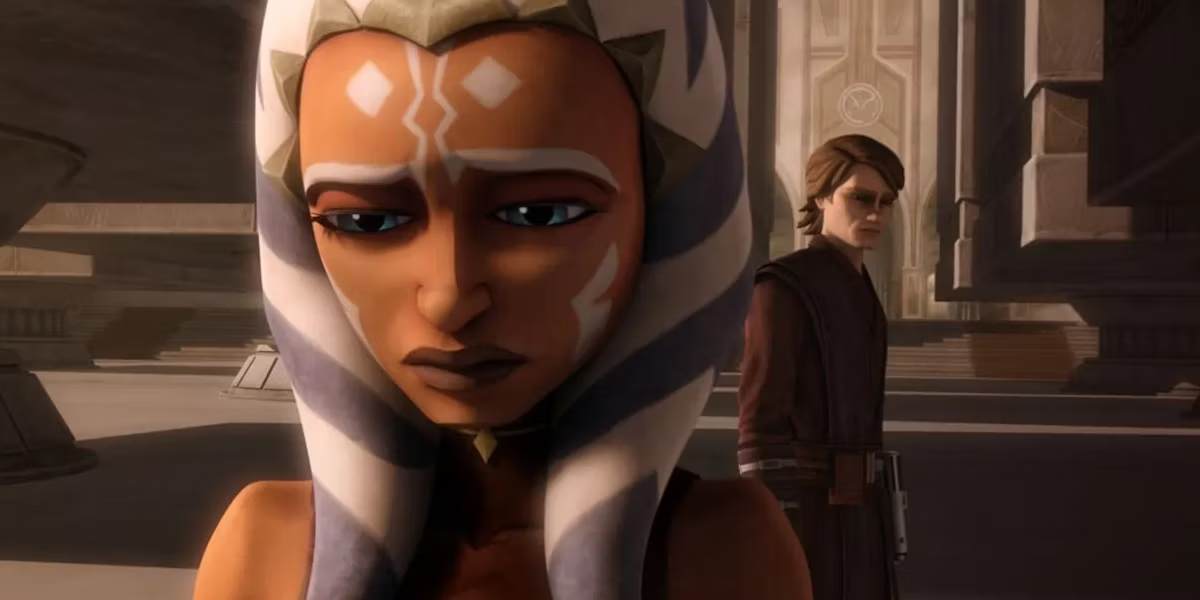
Chapter 3: The Betrayal of the Jedi Order
One of the most heart-wrenching and defining moments in Ahsoka Tano’s journey is her departure from the Jedi Order. This dramatic twist not only shocked fans but also became a pivotal point in the Star Wars narrative. For Ahsoka, it was a moment of disillusionment and betrayal, shaking her faith in the very institution that had raised her. But as painful as this chapter was, it also showed Ahsoka’s strength and integrity, ultimately defining her path as one of the most independent characters in the galaxy.
Ahsoka’s Role in the Jedi: A Bright Future Ahead?
At this point in The Clone Wars, Ahsoka had established herself as a capable and skilled Padawan. She was a talented leader on the battlefield, deeply respected by her clone troopers, and increasingly trusted by her peers in the Jedi Order. The sky seemed to be the limit for Ahsoka’s future as a Jedi. It wasn’t hard to imagine her climbing the ranks, eventually becoming a Jedi Knight, and perhaps even taking on a Padawan of her own.
But things didn’t quite go according to plan. The betrayal she would face wasn’t from a Sith Lord or some galactic conspiracy, but from within the very system she had dedicated her life to. For a character like Ahsoka, who had built her identity around being a Jedi, this was a devastating blow.
The Bombing of the Jedi Temple: Ahsoka Framed
It all began with a bombing at the Jedi Temple. In a shocking twist, Ahsoka was framed for the attack and accused of orchestrating the explosion. Evidence, seemingly damning, pointed to her involvement, and she was quickly apprehended by the Jedi Council. Ahsoka, once a beloved and respected member of the Jedi Order, found herself on the run, fighting to clear her name.
The worst part? The Jedi Council, the very group of mentors and leaders she had looked up to, didn’t stand by her. They doubted her innocence and seemed more concerned with maintaining their public image than investigating the truth. In one of the series’ most emotional moments, Ahsoka was left to fend for herself, feeling abandoned and betrayed by the people she trusted most.
Ahsoka’s Arrest: The Crushing Weight of Injustice
Watching Ahsoka get arrested was a gut punch for fans and fellow characters alike. Anakin, her master and closest ally, was devastated. He fought tooth and nail to prove her innocence, but the Council was unmoved. Ahsoka, once a rising star within the Jedi, was suddenly cast out—branded a traitor and a criminal.
Even in the face of this betrayal, Ahsoka remained true to herself. She didn’t lash out in anger or seek revenge. Instead, she stood tall, relying on her own sense of right and wrong to navigate the situation. It’s a testament to Ahsoka’s strength that even when the galaxy turned its back on her, she refused to let bitterness or hatred take root.
The Trial: Trust Shattered
The trial of Ahsoka Tano remains one of the most painful sequences in The Clone Wars. With her life on the line, Ahsoka stood before a Republic tribunal, accused of terrorism and treason. And while her former allies looked on, the Council seemed to hesitate in offering her any support. The trial wasn’t just a test of her innocence—it was a test of her faith in the Jedi Order.
Anakin, ever the loyal master, went to extreme lengths to clear her name, eventually uncovering the true culprit: Barriss Offee, a fellow Jedi who had become disillusioned with the Order. It was a shocking revelation that not only exonerated Ahsoka but also exposed the growing fractures within the Jedi itself. The fact that a Jedi would turn on the Order, believing it had lost its way, mirrored what Ahsoka herself was feeling.
Ahsoka Walks Away: The Ultimate Betrayal
After Ahsoka’s name was cleared, the Jedi Council extended an offer for her to return to the Order, essentially sweeping the whole affair under the rug. They even framed it as a “test” of her character, claiming it was part of her journey to becoming a Jedi Knight. But Ahsoka wasn’t fooled. She realized that this wasn’t just about one incident—it was about the deeper, systemic issues within the Jedi.
In a heartbreaking moment that would ripple through the entire Star Wars saga, Ahsoka chose to walk away. She rejected the Council’s offer, acknowledging that her trust in the Jedi had been shattered. The Order, once her home and family, had failed her in her time of need. With a heavy heart, Ahsoka left, setting off on her own path, independent from the institution that had shaped her.
Anakin’s Heartbreak: The Master Left Behind
Ahsoka’s decision to leave didn’t just impact her—it deeply affected Anakin. In many ways, Anakin saw Ahsoka as his younger sibling, someone he had trained and fought beside for years. Her departure hit him hard, and it’s one of the moments that pushed him further toward his eventual fall to the dark side.
Anakin’s desperation to keep Ahsoka in the Order was palpable. He begged her to stay, not just for her own sake, but for his. Ahsoka, however, remained resolute. She understood that her place was no longer with the Jedi. And as painful as it was, this moment marked the end of their master-apprentice relationship. Anakin’s inability to prevent her departure only deepened his sense of loss, feeding into the feelings of betrayal that would later consume him.
Ahsoka’s Independence: A New Path
Ahsoka’s departure from the Jedi Order didn’t just mark the end of her career as a Jedi—it marked the beginning of her journey as a truly independent force in the galaxy. By leaving the Order, Ahsoka freed herself from the strictures of Jedi dogma and allowed herself to forge her own path, one that wasn’t dictated by the rigid codes of the Jedi Council.
This decision set her apart from almost every other character in the Star Wars universe. Ahsoka wasn’t a Jedi, but she wasn’t a Sith either. She existed in that rare space in-between, guided by her own sense of morality and justice. It’s this independence that would later define her role in the Rebellion and her ongoing search for balance in the Force.
A Turning Point for the Jedi
Ahsoka’s departure wasn’t just a personal moment of growth for her character—it was a major turning point for the Jedi as a whole. Her decision to leave the Order highlighted the growing cracks in the Jedi Council’s leadership and their inability to adapt to the changing galaxy around them. The Order, once the proud defenders of peace and justice, had become bogged down in politics and bureaucracy.
For many fans, Ahsoka’s walk away from the Jedi symbolized the institution’s inevitable downfall. It was a foreshadowing of the Order’s inability to prevent the rise of the Empire and the fall of Anakin Skywalker. Ahsoka, in leaving, made a statement: the Jedi were no longer the moral beacons they once claimed to be.
Ahsoka Tano: Betrayed, But Unbroken
Though Ahsoka was betrayed by the Jedi Order, she emerged from the ordeal stronger than ever. Her integrity, resilience, and independence set her apart as one of the most compelling characters in the Star Wars universe. Unlike many others, Ahsoka refused to let her experiences embitter her. Instead, she used the lessons learned from her betrayal to navigate a galaxy that was growing darker by the day.
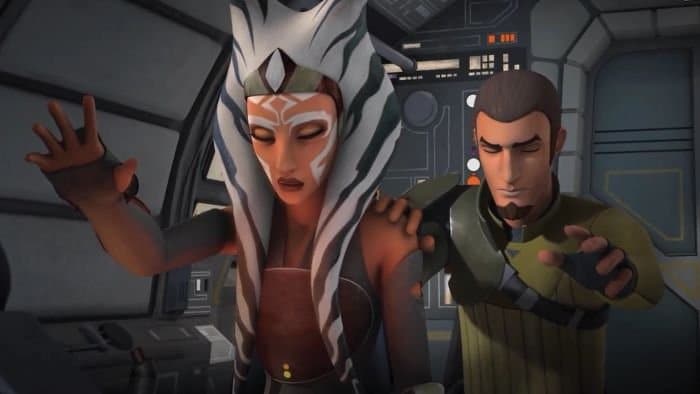
Chapter 4: The Ghost of Ahsoka in Rebels
Ahsoka Tano’s reappearance in Star Wars Rebels brought new depth and intrigue to her character, as she evolved from a former Jedi into a mysterious and powerful figure working in the shadows. Set years after her departure from the Jedi Order, Rebels introduced Ahsoka under the codename “Fulcrum,” an enigmatic agent aiding the early rebellion against the Empire. Her involvement in this new series not only thrilled longtime fans but also revealed just how far she had come since leaving the Jedi behind.
Ahsoka Returns: Enter Fulcrum
When Rebels began airing, Ahsoka’s fate after The Clone Wars was still largely a mystery. Fans were left wondering what had become of the young Padawan after she walked away from the Jedi Order. Enter “Fulcrum,” a secretive informant providing crucial intel to the Ghost crew, the main protagonists of Rebels. It wasn’t until season one’s finale that Fulcrum’s true identity was revealed, and it was none other than Ahsoka herself.
This was a huge moment for fans. Ahsoka’s return to the galaxy was triumphant, and it immediately made her one of the central players in the growing rebellion. But this wasn’t the same Ahsoka we had seen in The Clone Wars. She was older, wiser, and more guarded. Her experiences had shaped her into a warrior who operated outside the traditional Jedi teachings, yet her dedication to fighting evil remained as strong as ever.
Fulcrum’s Role: Ahsoka in the Shadows
As Fulcrum, Ahsoka was a key figure in helping to organize and support the early Rebel Alliance. Her tactical brilliance and insider knowledge of the Jedi and Sith made her an invaluable asset. However, she wasn’t one to seek the spotlight. Unlike her time as a Jedi, Ahsoka worked from the shadows, preferring to guide and advise the Ghost crew rather than leading the charge herself.
This period in Ahsoka’s life is defined by subtlety and secrecy. She provided critical information to rebel cells across the galaxy, helping to coordinate attacks against the Empire. Her work as Fulcrum was vital in bringing together various factions to form what would become the Rebel Alliance. But Ahsoka’s low-profile involvement also reflected her internal struggle—while she was still committed to fighting injustice, she wasn’t ready to embrace the mantle of a Jedi again.
Ahsoka and the Ghost Crew: New Allies, Old Wisdom
As Fulcrum, Ahsoka formed a strong bond with the crew of the Ghost, especially with Kanan Jarrus and Ezra Bridger, two of the last remaining Jedi. Ahsoka’s mentorship of Ezra was particularly significant. Though she no longer identified as a Jedi, she recognized Ezra’s potential and sought to guide him as he developed his Force abilities.
Her interactions with Kanan and Ezra are fascinating because they reflect her own journey. Having walked away from the Jedi, Ahsoka could offer a unique perspective on the Force—one not bound by the rigid codes of the Jedi Order. She encouraged Ezra to think critically about his connection to the Force, rather than simply following old traditions. In many ways, Ahsoka became a mentor figure, but with a more nuanced and flexible approach to the Force than the Jedi of the past.
Ahsoka vs. Darth Vader: The Ultimate Showdown
One of the most dramatic and emotionally charged moments in Rebels came when Ahsoka faced her former master, Darth Vader. Throughout the series, Ahsoka had harbored suspicions about Vader’s true identity, but when the two finally came face to face, the truth was undeniable. This was Anakin Skywalker, the man she had once followed into battle, now twisted and consumed by the dark side.
The battle between Ahsoka and Vader on the Sith world of Malachor is nothing short of epic. Their duel isn’t just a physical confrontation—it’s an emotional reckoning. For Ahsoka, it’s the moment she realizes the full extent of Anakin’s fall. And for Vader, it’s a reminder of his former life, something he’d rather forget. Ahsoka refuses to leave her former master behind, telling him, “I won’t leave you. Not this time.” But Vader coldly responds, “Then you will die.” Their clash is brutal and symbolic, representing not just the conflict between light and dark, but between past and present.
Ahsoka’s “Death”: Lost in Time
During the battle with Darth Vader, Ahsoka seemingly sacrifices herself to allow the Ghost crew to escape. The temple collapses, and for a while, it appears that Ahsoka’s story might have come to a tragic end. Fans were left reeling—could this be the end of Ahsoka Tano?
But Star Wars loves a good twist, and Rebels provided one in spades. In a later season, Ezra Bridger discovers the “World Between Worlds,” a mystical dimension that connects time and space. It’s here that Ezra, through a portal, reaches back in time to the moment of Ahsoka’s fight with Vader. He pulls her out of the collapsing temple, saving her life and giving Ahsoka a second chance. This moment added a mind-bending element to the Star Wars mythos (time travel, anyone?), but more importantly, it ensured that Ahsoka’s journey wasn’t over.
Ahsoka’s Role in the Rebellion: A Symbol of Hope
Though Ahsoka operated behind the scenes for much of Rebels, her presence was deeply felt. She became a symbol of hope for the Ghost crew and the wider rebellion. Even after her apparent “death,” the memory of her sacrifice continued to inspire those who fought against the Empire. Ahsoka wasn’t just a warrior or a Jedi—she was a symbol of resilience, someone who had endured betrayal, loss, and heartbreak, yet continued to fight for what was right.
Her quiet strength and determination had a profound impact on those around her. Characters like Ezra and Kanan looked to her for guidance, and even though she no longer considered herself a Jedi, she embodied the best qualities of the Order—compassion, courage, and a relentless pursuit of justice. Ahsoka’s willingness to work from the shadows, to support others without seeking glory, made her a true hero of the Rebellion.
The White Lightsabers: Ahsoka’s Symbol of Independence
In Rebels, Ahsoka wields two white-bladed lightsabers, which are more than just weapons—they’re symbols of her unique place in the galaxy. Unlike the traditional blue or green lightsabers of the Jedi or the red blades of the Sith, Ahsoka’s white sabers reflect her neutrality. She’s not bound by the Jedi Code, but she’s also far removed from the dark side.
The process of creating these white lightsabers is as symbolic as their appearance. Ahsoka purified kyber crystals taken from an Inquisitor’s red lightsabers, turning them into her own. This act of cleansing corrupted crystals mirrors Ahsoka’s own journey. She’s neither Jedi nor Sith, but something entirely her own. These white lightsabers became iconic symbols of her independence and marked her as a warrior who stood apart from the traditional conflicts of light and dark.
Ahsoka’s Future: A New Quest
By the end of Rebels, Ahsoka is no longer just a warrior fighting against the Empire—she’s on a personal quest. After the mysterious disappearance of Ezra Bridger and Grand Admiral Thrawn, Ahsoka sets out to find them. Her journey takes her beyond the events of Rebels, setting the stage for future stories in the Star Wars universe.
Ahsoka’s role in Rebels not only cemented her legacy as one of the most important characters in Star Wars, but it also opened up new possibilities for her future. She had evolved from a Jedi Padawan into a pivotal figure in the Rebellion, and her story was far from over. As Fulcrum, as a mentor, and as a survivor, Ahsoka continued to prove that she was one of the galaxy’s brightest lights, even in its darkest moments.
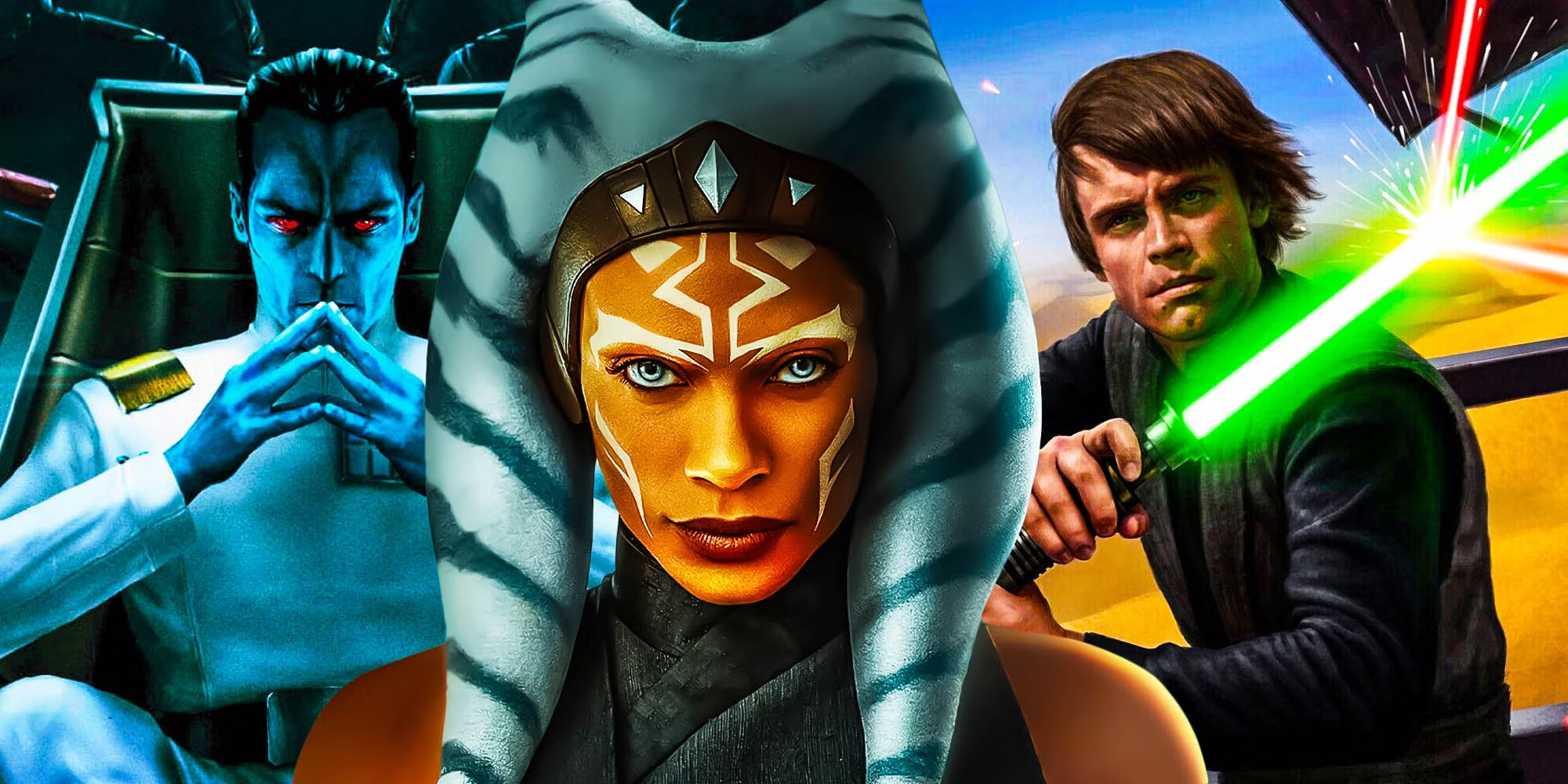
Chapter 5: Ahsoka Tano in Legends vs. Canon
When it comes to the Star Wars universe, few characters straddle the line between Legends and Canon as intriguingly as Ahsoka Tano. While Ahsoka’s character was introduced during the “Canon” era—after George Lucas’s Star Wars: The Clone Wars animated series debuted in 2008—her influence and presence have generated discussions across both Canon and Legends fans. So, where exactly does Ahsoka fit in between these two worlds, and how does her development differ across the two?
Ahsoka’s Origins in Canon
Ahsoka’s entire story originates from the Canon universe. Created by George Lucas and developed by Dave Filoni, she made her debut as Anakin Skywalker’s Padawan in The Clone Wars. From the very beginning, Ahsoka’s story was meant to be an integral part of Canon. She wasn’t a character retrofitted from the Legends era but rather one designed specifically to explore new angles in the established Star Wars lore.
In Canon, Ahsoka’s story is deeply tied to the key events of the Clone Wars, her complex relationship with Anakin, and the eventual formation of the Rebel Alliance. Her departure from the Jedi Order, her survival during Order 66, and her fight against the Empire all happen within the tightly woven fabric of Star Wars Canon. Her character has now moved beyond the animated series into live-action with her appearances in The Mandalorian and the standalone Ahsoka series, further solidifying her role in the evolving Canon timeline.
Legends Ahsoka: A “What If” That Never Was
Since Ahsoka was created during the modern Star Wars Canon era, she never officially existed in the Legends continuity, which encompassed the Expanded Universe (EU) before Disney’s acquisition of Lucasfilm in 2012. However, this hasn’t stopped Legends fans from speculating about what role she might have played had she been introduced earlier.
The Legends continuity is filled with rich narratives that explore the Star Wars galaxy in extreme depth, often expanding on themes and characters far beyond what the films and shows touched on. For many fans, the introduction of a character like Ahsoka in Legends could have opened up intriguing possibilities. Perhaps she would have been a significant figure in the New Jedi Order, or maybe even a key player in battles against the Yuuzhan Vong—a species and storyline unique to Legends.
While Ahsoka was never canonically part of Legends, fans often ponder how her journey might have intersected with legendary EU characters like Mara Jade, Grand Admiral Thrawn (in his Legends version), or even Luke Skywalker’s own Jedi Academy.
The Impact of Ahsoka in Canon
In the official Canon, Ahsoka’s influence has been monumental. She’s not just Anakin’s Padawan—her departure from the Jedi Order marked a huge shift in The Clone Wars, allowing her character to question the rigid doctrines of the Jedi Council and stand independently. As Canon evolved, Ahsoka became the bridge between the prequel and original trilogies, providing insight into the failures of the Jedi Order and how it contributed to the rise of the Empire.
Her impact extends beyond just her actions. Ahsoka embodies the nuanced character arc that Canon thrives on. She’s neither entirely bound by the Jedi way nor tempted by the Sith. As someone who walks her own path, she helps redefine what it means to follow the Force. Canon places Ahsoka as a critical player in reshaping the galaxy during the Imperial era, especially with her involvement in Rebels, her battle with Darth Vader, and her pursuit of Grand Admiral Thrawn.
Her reappearance in The Mandalorian takes this one step further, showing that her story stretches even beyond the Empire’s fall. For fans, Ahsoka represents the complex and evolving nature of the Star Wars universe in Canon, where characters are given the space to grow, change, and challenge the status quo.
Ahsoka’s Thematic Role in Canon
Ahsoka Tano’s journey in Canon is deeply thematic, touching on ideas of loyalty, faith, and disillusionment. Her exit from the Jedi Order was one of the most significant character moments in The Clone Wars. It wasn’t just a personal decision—it symbolized the greater disillusionment many Jedi felt about the Order’s direction during the war. Ahsoka’s choice to leave reflected the growing cracks in the Jedi’s moral foundation.
In Rebels, Ahsoka’s presence as Fulcrum continues to explore these themes. As someone who understands the complexities of both the Jedi and the Sith, she’s a symbol of balance—neither fully aligned with the light nor the dark. Her neutrality and independence make her a fascinating figure within Canon, as she’s unafraid to question the teachings that shaped her.
This exploration of gray morality is something Canon handles well with Ahsoka’s character. She’s a perfect example of the new type of hero that Star Wars wants to explore—one who exists in the middle, operating by her own code of ethics rather than any rigid institution.
Ahsoka and the Expanded Universe: The Hypothetical Legends Stories
In an alternate timeline, had Ahsoka existed in the Legends universe, her journey could have taken a dramatically different turn. Legends was known for its sprawling, often experimental storytelling, and Ahsoka would have fit right in with that. Imagine Ahsoka participating in the Jedi Purge from a more direct angle, perhaps crossing paths with Legends characters like Kyle Katarn or Corran Horn.
It’s also fun to imagine how Legends might have handled her post-Jedi life. Perhaps she would have joined the ranks of Luke Skywalker’s New Jedi Order or even been a critical player in fighting off the Yuuzhan Vong invasion. Given Legends’ tendency to explore big, galaxy-shaking events, Ahsoka could have become a hero fighting on the front lines against a whole host of external threats.
While these stories never came to pass, the Legends continuity is rich with possibilities that could have extended Ahsoka’s role far beyond her time in The Clone Wars. However, since Legends was decanonized when Disney took over, Ahsoka’s narrative remained firmly in the Canon realm, and her influence in the Star Wars universe became more focused.
The Live-Action Leap: From Animation to Real-World Canon
Ahsoka Tano’s character reached new heights when she transitioned from animation to live-action. The Canon universe embraced this change with Rosario Dawson portraying Ahsoka in The Mandalorian, finally bringing her character to life in a way fans had dreamed of for years. The live-action Ahsoka carried the same depth and wisdom we had seen in The Clone Wars and Rebels, but with a grounded, more mature energy.
This transition was unique to Canon; Legends characters have sometimes reappeared in Canon, but Ahsoka’s path is the opposite. She was created in Canon, built up in animation, and then made her way to live-action—a testament to her staying power and the love the creators and fans have for her. This shift into live-action not only solidified her place in Canon but also opened up new narrative possibilities for future Star Wars stories, particularly with her standalone Ahsoka series.
Ahsoka’s Canon Legacy: A Bridge Between Eras
In Canon, Ahsoka represents more than just a single character. She’s a bridge between eras. From the Republic’s fall in The Clone Wars to the rise of the Rebellion in Rebels and the New Republic in The Mandalorian, Ahsoka’s journey is a continuous thread that connects the prequels, the original trilogy, and even the sequels. She’s one of the few characters who truly transcends timelines, making her a vital figure in Star Wars lore.
While Legends offered plenty of incredible stories and characters, Ahsoka’s role in Canon is unique, and her journey is far from over. From her days as Anakin’s Padawan to her status as a free agent operating in the shadows of the galaxy, Ahsoka Tano remains one of the most compelling characters in the Star Wars universe.
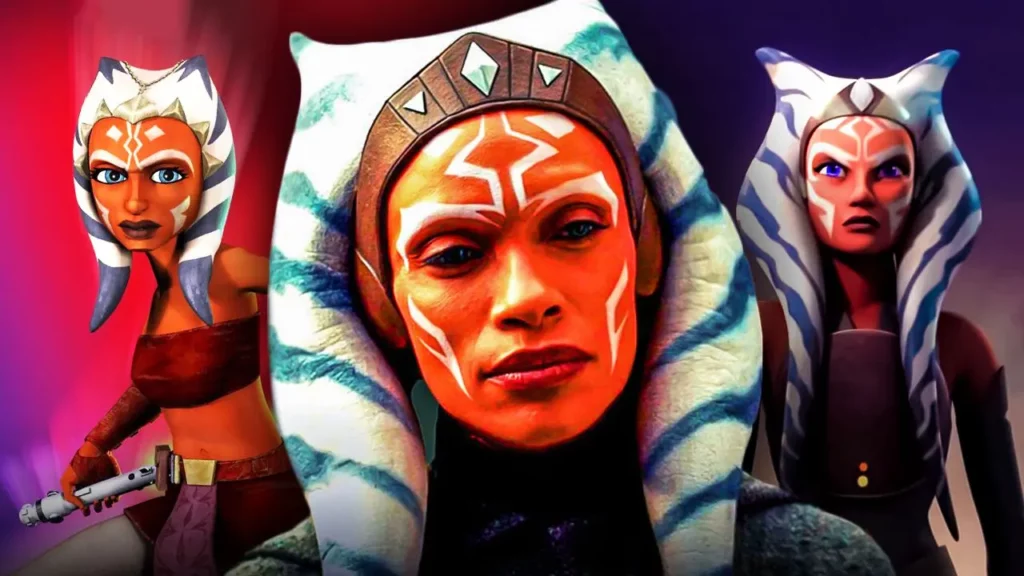
Chapter 6: From Animation to Live Action – Rosario Dawson as Ahsoka
Ahsoka Tano, the once-animated star of Star Wars: The Clone Wars and Star Wars Rebels, made a monumental leap into live-action with the casting of Rosario Dawson in The Mandalorian. This transition was not just a triumph for Star Wars fans but a significant moment in television history, as one of the most beloved animated characters took on a new form. Fans were both eager and nervous to see if this transition would honor the Ahsoka they had grown to love. Spoiler alert: It did. Rosario Dawson’s portrayal of Ahsoka exceeded expectations, seamlessly blending the wisdom, strength, and complexity of the animated Ahsoka into the live-action universe.
Casting the Right Ahsoka: Rosario Dawson Steps In
When news broke that Rosario Dawson would be portraying Ahsoka in The Mandalorian, the fan reaction was overwhelmingly positive. Dawson had long been a fan favorite to play the character, with even some fan-casting campaigns advocating for her to take on the role. Her dedication to the character and her enthusiasm for Star Wars made her the perfect fit.
Rosario Dawson brought a maturity and grounded energy to the role, reflecting the evolution of Ahsoka since we last saw her in Rebels. By the time of her appearance in The Mandalorian, Ahsoka is no longer a young, rebellious Padawan but a seasoned, powerful warrior with a mysterious presence. Dawson effortlessly captured this side of Ahsoka, blending the character’s past experiences with the stoic wisdom she now carries as an older, more self-assured figure.
The Transition: From Animation to Live Action
Making the leap from animation to live-action is no small feat, especially for a character as iconic and visually unique as Ahsoka Tano. Her Togruta appearance—complete with facial markings, elongated montrals, and lekku (head-tails)—was a huge part of her animated identity. Fans were understandably curious about how these distinctive features would translate to the physical world.
The creators behind The Mandalorian worked tirelessly to ensure that Ahsoka’s live-action debut stayed true to her animated origins. Her head-tails were slightly shorter to allow for better movement during action scenes, but her signature look remained intact. Rosario Dawson’s transformation into Ahsoka wasn’t just about visual effects, though. It was about bringing the character’s emotional depth and internal journey to life in a way that felt authentic to both old and new fans.
Dawson studied Ahsoka’s movements, speech patterns, and personality, as portrayed by Ashley Eckstein in the animated series, and incorporated them into her performance. However, she added her own touch, giving live-action Ahsoka a quieter, more deliberate demeanor fitting her status as a wandering warrior rather than a fiery young Padawan.
Rosario’s Ahsoka: A Warrior with Wisdom
Ahsoka in The Mandalorian is a warrior who has seen it all. Rosario Dawson expertly portrays this version of Ahsoka as someone shaped by her years of experience—years that have made her wise, cautious, and a little hardened. Gone is the impulsive teenager we met in The Clone Wars. In her place stands a figure of calm authority, someone who has been through enough battles to understand the value of patience and strategy.
When we first meet Ahsoka in The Mandalorian, she’s in the middle of a mission, using her dual lightsabers with precision and grace. This isn’t a Jedi following orders; this is a warrior acting on her own moral compass. She’s more reserved than she was in her younger days, but still possesses the same inner fire that made her a standout character. Dawson’s portrayal captured that balance perfectly—Ahsoka may be older and wiser, but she’s still driven by the same desire to protect the galaxy from darkness.
Ahsoka and Grogu: The Meeting of Two Icons
One of the most anticipated moments in The Mandalorian was Ahsoka’s meeting with Grogu, affectionately known as Baby Yoda. This meeting wasn’t just a cute encounter between two Star Wars icons—it was deeply symbolic. Ahsoka’s refusal to train Grogu was one of the most powerful moments in the series, echoing her own experiences with Anakin Skywalker.
Dawson’s portrayal of Ahsoka in this moment was masterful. She managed to convey the deep emotional scars left by her relationship with Anakin, without needing a lengthy explanation. When she tells Din Djarin that Grogu has “too much fear in him,” it’s clear that she’s thinking of her former master’s tragic fall to the dark side. This scene not only adds layers to Ahsoka’s character but also shows how Dawson can deliver powerful, unspoken emotional depth.
Ahsoka’s Combat Style: Bringing the Blades to Life
Ahsoka’s lightsaber skills were one of her defining traits in the animated series, and fans were eager to see how that would translate into live-action. In The Mandalorian, we see that Dawson’s Ahsoka hasn’t lost a step. Her fighting style remains true to the fluid, dual-lightsaber combat that The Clone Wars fans adored. However, live-action Ahsoka’s combat scenes are more grounded, reflecting her evolution into a more mature, deliberate fighter.
Dawson worked with stunt coordinators and fight choreographers to make sure Ahsoka’s movements stayed true to her animated counterpart while adapting them for the live-action medium. Her dual lightsabers, wielded with that iconic reverse grip, made a triumphant return, with Dawson moving seamlessly between combat and quieter, more reflective moments. The fluidity and grace of Ahsoka’s fighting style remained intact, showcasing the perfect blend of power and agility that defines her character.
Rosario Dawson vs. Ashley Eckstein: Honoring the Past, Embracing the Future
One of the most discussed aspects of Ahsoka’s transition to live-action was the change in voice actors. Ashley Eckstein had been the voice of Ahsoka throughout her animated journey, and her performance was central to the character’s development. Naturally, some fans were concerned about how the shift to Rosario Dawson would affect the character’s voice and personality.
Dawson approached this challenge with respect and grace, acknowledging Eckstein’s enormous contribution to Ahsoka’s legacy. While their voices are different, Dawson made sure to carry over many of the mannerisms, speech patterns, and emotional tones that Eckstein had established in the character. Rather than trying to replicate Eckstein’s voice, Dawson focused on capturing Ahsoka’s essence—her independence, wisdom, and strength—while adding her own spin as an actress.
This respectful handoff allowed fans to embrace Dawson as Ahsoka without feeling like the character’s essence had been lost. Dawson’s performance felt like a natural continuation of Ahsoka’s story, bridging the gap between animation and live-action with finesse.
Live-Action Ahsoka’s Impact on the Star Wars Universe
The success of Rosario Dawson’s portrayal of Ahsoka in The Mandalorian has opened new doors for the character within the Star Wars universe. Her live-action debut was met with such excitement that Disney quickly announced the development of a standalone Ahsoka series, set to dive deeper into her post-Rebels journey.
This shift into live-action allows Ahsoka to interact with characters and storylines that were previously off-limits in the animated series. It also cements her as one of the key figures in the post-Empire era, playing an important role in the New Republic’s efforts to maintain order. With Rosario Dawson at the helm, Ahsoka is set to continue her journey as one of the most beloved characters in Star Wars lore, now visible to a broader audience beyond the animated fanbase.
Ahsoka in the Future: What Lies Ahead
The future of Ahsoka, with Rosario Dawson in the role, is one of the most exciting prospects in the Star Wars universe. The upcoming Ahsoka series will likely explore her search for Grand Admiral Thrawn and her continued journey as a lone warrior navigating a galaxy still recovering from the fall of the Empire. Fans can expect to see more of Dawson’s portrayal of Ahsoka in increasingly complex storylines that blend the character’s past with the evolving political and mystical conflicts of the galaxy.
Rosario Dawson’s portrayal of Ahsoka has proven that the character’s story is far from over.
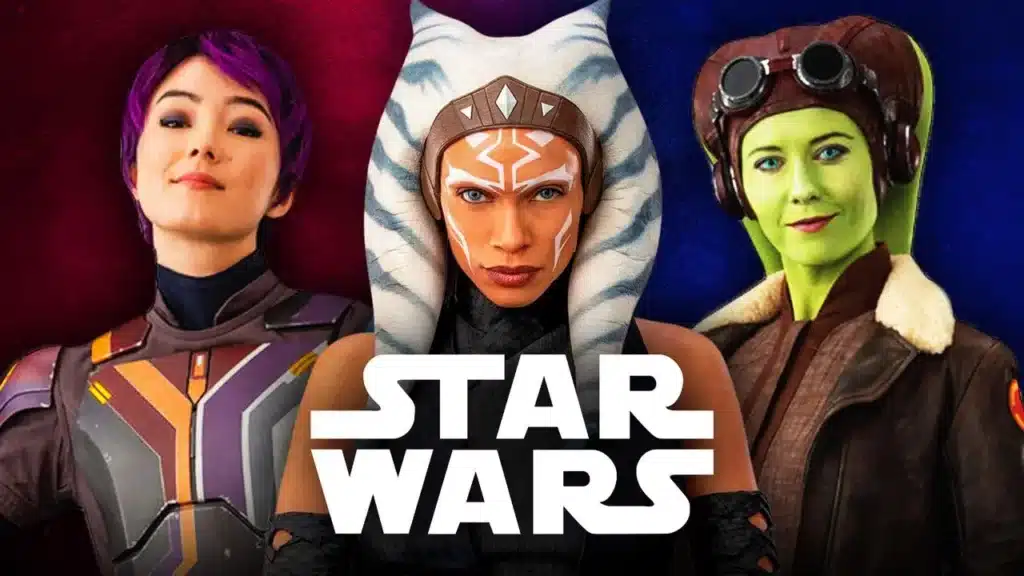
Chapter 7: The Ahsoka Series – A Journey Continues
Ahsoka Tano’s story has captivated audiences since her debut in Star Wars: The Clone Wars, and now, her journey continues in the much-anticipated Ahsoka series on Disney+. This new chapter promises to delve deeper into the life of one of the most beloved characters in the Star Wars universe. From her quest to find lost allies to confronting old enemies, the Ahsoka series is shaping up to be a major event for fans who’ve followed her from animation to live-action.
Ahsoka’s Quest: The Search for Thrawn and Ezra
The Ahsoka series is set to take place after the events of Star Wars: Rebels, where Ahsoka was last seen embarking on a mission to find Ezra Bridger, a young Jedi who disappeared into hyperspace alongside the villainous Grand Admiral Thrawn. Ahsoka’s search for both Thrawn and Ezra is likely to be the central narrative thread in the new series, bringing closure to a mystery that has kept fans speculating for years.
Ezra Bridger’s disappearance at the end of Rebels left a huge question mark over Ahsoka’s future, and now, with the Ahsoka series, that question is finally getting the attention it deserves. Grand Admiral Thrawn, one of the most formidable villains in Star Wars history, is rumored to be a significant antagonist in the series, which means Ahsoka will not only be dealing with the search for her lost friend but also facing one of the galaxy’s most dangerous minds. This storyline builds on the rich history of Rebels, tying together loose ends while opening new possibilities for the Star Wars galaxy.
The Thrawn Threat: Ahsoka’s Most Formidable Foe?
Thrawn’s potential return in the Ahsoka series has sent shockwaves through the fanbase. Known for his icy intellect, military brilliance, and ability to outmaneuver his enemies, Thrawn is not your typical Star Wars villain. He’s a master strategist who relies on cunning and psychological manipulation rather than brute force, which presents a unique challenge for Ahsoka.
Thrawn’s presence in the series not only brings with it high stakes but also the possibility of larger galactic implications. As a key figure in the Legends universe who was reintroduced into Canon through Rebels, Thrawn’s return suggests that Ahsoka’s journey is tied to something far more significant than just a personal mission. Thrawn’s ambitions may extend to rebuilding the remnants of the Empire or laying the groundwork for the First Order, making him a villain of galactic proportions.
Ahsoka’s encounters with Thrawn will test her wisdom, skill, and resolve. Having faced Sith Lords and warlords before, she’s no stranger to powerful adversaries, but Thrawn’s brand of cold, calculating villainy might be her toughest challenge yet.
The Role of the Force in Ahsoka
Ahsoka’s connection to the Force has always been one of her defining traits, but her relationship with it is far more complex than most Jedi or Sith. After leaving the Jedi Order, Ahsoka’s connection to the Force evolved. She rejected the rigid structure of the Jedi but continued to follow her own path, one that is neither fully aligned with the light nor dark sides. This makes her a unique character in the Star Wars universe—someone who is attuned to the Force but isn’t bound by the traditional Jedi teachings.
The Ahsoka series is expected to explore this further, perhaps offering insights into Ahsoka’s continued growth in her understanding of the Force. With the introduction of mystical elements in Rebels, such as the World Between Worlds—a realm outside of time and space—there’s a chance that Ahsoka’s series could dive deeper into the spiritual and cosmic aspects of the Force. Given her history of stepping into unknown realms of the Force, Ahsoka’s journey may lead her to uncover even more secrets about the Force that could reshape our understanding of it.
Allies Old and New: Who Will Join Ahsoka?
A key part of any Star Wars series is the supporting characters, and in the Ahsoka series, there’s no shortage of intriguing possibilities. Fans can expect to see familiar faces from Rebels, including Sabine Wren, the Mandalorian warrior who was last seen joining Ahsoka on her search for Ezra. Sabine’s return would bring a powerful ally to Ahsoka’s side, adding both combat prowess and emotional depth to the story.
Hera Syndulla, the fearless pilot of the Ghost, may also reappear. Given her role in the Rebellion and her close connection to both Ahsoka and Ezra, Hera could be an important figure in the series, particularly as Ahsoka navigates the challenges of rebuilding alliances in a galaxy still recovering from war.
Additionally, with Ahsoka’s connection to the Force and her experience as a former Jedi, it’s possible that we might see interactions with other Force-sensitive characters. Could Ahsoka cross paths with Luke Skywalker, who is also trying to restore the Jedi Order? The possibilities are endless, and fans are eagerly awaiting to see who will stand beside (or against) Ahsoka in her journey.
Ahsoka and the Legacy of the Jedi
One of the most compelling themes in the Ahsoka series is likely to be Ahsoka’s relationship with the Jedi legacy. After walking away from the Order, Ahsoka carved her own path, and she has never officially returned to the Jedi fold. However, her values and beliefs have always been in line with the core principles of the Jedi—protecting the innocent, seeking justice, and resisting the dark side. The series may explore whether Ahsoka will finally reconcile with the Jedi ways or continue to distance herself from their dogma.
As someone who has witnessed the fall of the Jedi Order and the rise of the Empire, Ahsoka’s perspective on the Jedi is unique. She’s seen the flaws in the Order’s strict code, but she’s also seen the dangers of the dark side through her former master, Anakin Skywalker. In the Ahsoka series, her inner conflict regarding the legacy of the Jedi may come to the forefront, forcing her to confront what it means to be a Jedi in a galaxy where the Order no longer exists.
The Return of Ahsoka’s Iconic Dual Lightsabers
Ahsoka’s dual white lightsabers are more than just weapons—they are a symbol of her independence and her rejection of the binary light vs. dark conflict. These sabers, with their unique white blades, represent Ahsoka’s neutrality. She is a Force-user who follows her own moral code, untethered to either the Jedi or Sith. In the Ahsoka series, fans will undoubtedly be treated to more of her masterful lightsaber combat, which has always been one of the most exciting aspects of her character.
With Rosario Dawson in the role, Ahsoka’s lightsaber skills will be on full display, blending her animated combat style with the grounded realism of live-action choreography. The dual-wielding technique, with her distinctive reverse grip, will be a key element of her action scenes, providing fans with the thrilling lightsaber duels they’ve come to expect from the character. As Ahsoka faces off against new enemies, her white lightsabers will serve as a reminder of her unique place in the galaxy—a symbol of her autonomy and her unyielding commitment to justice.
Ahsoka’s Journey: A Story Far From Over
The Ahsoka series promises to expand on the character’s already rich backstory, exploring new facets of her personality, her relationships, and her place in the Star Wars galaxy. With Rosario Dawson reprising the role, Ahsoka’s journey is far from over. This series will allow fans to see more of Ahsoka’s evolution as she navigates a galaxy that is still in flux, searching for balance, lost allies, and justice.
As Ahsoka continues her quest, the series is expected to offer answers to long-standing questions while raising new ones. What is Ahsoka’s ultimate fate? Will she find Ezra? And what role will she play in shaping the future of the galaxy? Fans are eagerly anticipating the answers, but one thing is clear—Ahsoka’s journey is only just beginning, and the Ahsoka series is set to be an epic continuation of her legacy in the Star Wars universe.
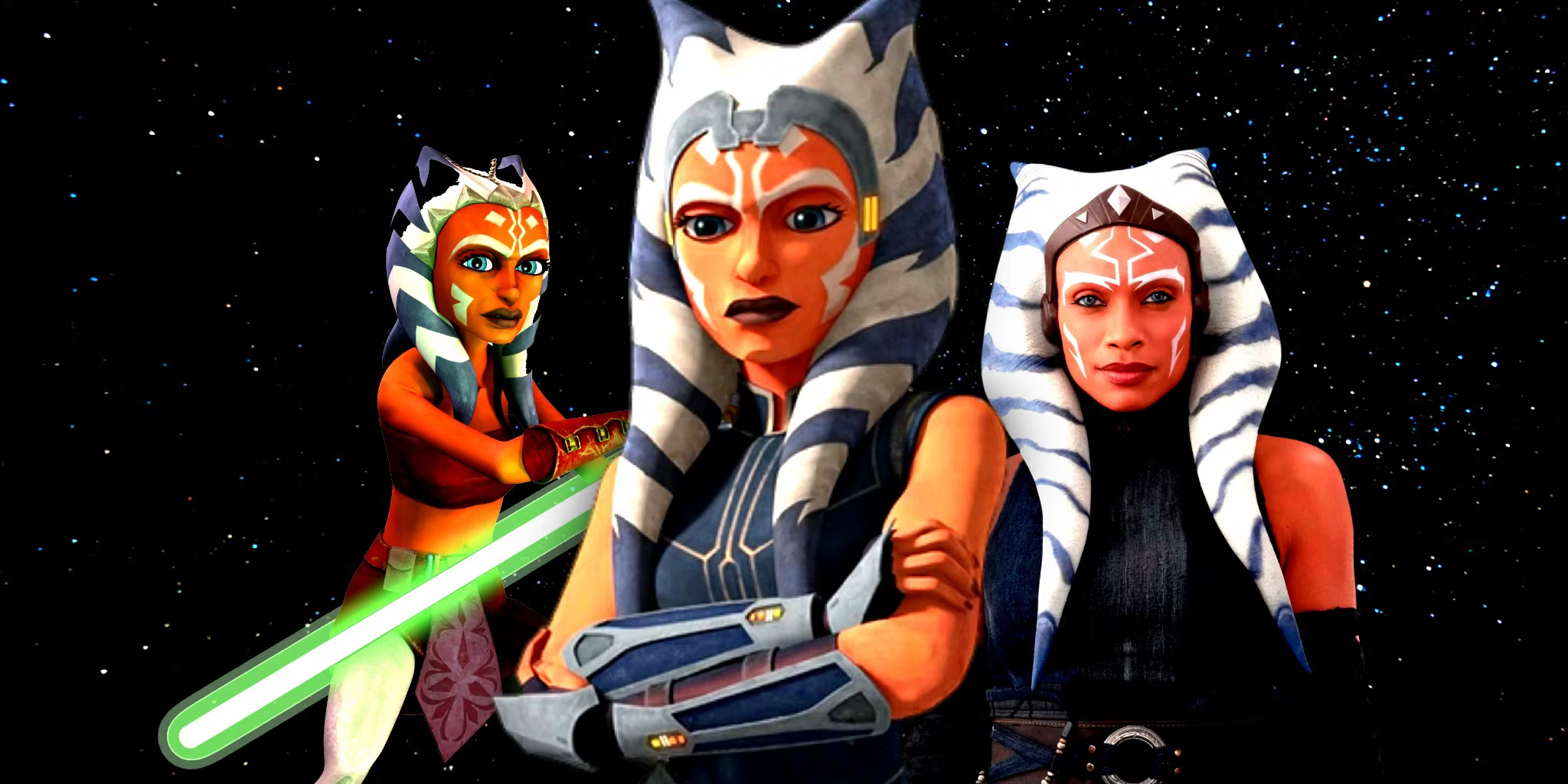
Chapter 8: Why Ahsoka is the Most Unique Star Wars Character
Ahsoka Tano stands out as one of the most unique and beloved characters in the Star Wars universe, embodying the complexity, independence, and growth that few characters can claim. From her introduction in The Clone Wars to her live-action debut in The Mandalorian and upcoming Ahsoka series, she has captured the hearts of fans with her resilience, wisdom, and dynamic evolution. But what truly sets Ahsoka apart from the galaxy’s many heroes, Jedi, and villains?
Ahsoka: A Character Created Outside the Skywalker Shadow
Unlike many major Star Wars characters, Ahsoka wasn’t introduced as a member of the Skywalker family or tied to the saga’s primary bloodline. Yet, she remains deeply connected to the saga’s core narrative, having been trained by Anakin Skywalker himself. This connection made Ahsoka’s journey even more compelling because she is both part of and separate from the Skywalker story.
What makes Ahsoka unique is how her character has grown independently of the Skywalker family drama. While Anakin’s fate as Darth Vader casts a long shadow over her life, Ahsoka breaks free from the conventional Jedi mold to forge her own path, refusing to be defined by her master’s choices. Her evolution into a self-made hero, unbound by the limitations of legacy, makes her a one-of-a-kind figure in the Star Wars universe.
The Jedi Who Walked Away
Perhaps the most defining moment in Ahsoka’s journey was her decision to leave the Jedi Order. While the Jedi Code was central to many Star Wars heroes, Ahsoka’s departure made her one of the few Force-sensitive characters to voluntarily walk away from the Order. This act of defiance was not born of anger or temptation by the dark side, but from a place of deep disillusionment.
Ahsoka’s decision to leave the Jedi reflects her independence and moral integrity. She wasn’t willing to stay with an institution that had betrayed her trust, and her walk away from the Jedi was a bold move, symbolizing her strength to stand alone. Few characters in Star Wars have had the courage to question the very institutions they were raised in, and even fewer have the depth to maintain their principles without the backing of a greater organization like the Jedi.
Neither Jedi Nor Sith: Ahsoka’s Moral Neutrality
Ahsoka’s refusal to identify strictly as a Jedi or align herself with the Sith further sets her apart in the Star Wars galaxy. After leaving the Jedi Order, Ahsoka’s connection to the Force remains strong, but she no longer adheres to the rigid rules and codes of the Jedi. She carves out her own moral path, guided by her innate sense of right and wrong, rather than an institutional framework.
Ahsoka’s moral flexibility makes her stand out as a character who operates in the gray areas of the Star Wars universe. While characters like Luke Skywalker represent the purest form of the Jedi ideal, and characters like Darth Vader embody the seduction of the dark side, Ahsoka moves beyond these dichotomies. Her independence from both the Jedi and the Sith gives her a unique position—she fights for justice, but on her own terms.
Her white lightsabers serve as a visual reminder of this neutrality. These blades, free of the colors traditionally associated with the Jedi (blue, green) or Sith (red), symbolize Ahsoka’s commitment to remaining true to her own principles rather than conforming to the binary morality of the Star Wars universe.
Ahsoka’s Evolution: A Character with Depth and Growth
Ahsoka’s character arc is one of the most detailed and satisfying in the Star Wars saga. When she was first introduced as Anakin Skywalker’s Padawan in The Clone Wars, she was a brash and impulsive teenager—traits that mirrored her master. At first, many fans weren’t sure what to make of her. But over time, Ahsoka matured into a strong, independent leader, making decisions that were far beyond her years.
This growth is what makes Ahsoka so compelling. We’ve watched her make mistakes, learn from them, and evolve into one of the most powerful and respected figures in the Star Wars galaxy. Unlike many characters who remain static, Ahsoka’s story is dynamic, filled with personal challenges and growth. From her early days as an eager apprentice to her role as a wise and battle-hardened warrior in Rebels, and finally to her mysterious presence in The Mandalorian, Ahsoka’s journey is one of constant transformation.
Ahsoka’s Relationships: A Bond with Fans
Ahsoka’s relationships with other characters are another reason she stands out. Her connection with Anakin Skywalker is central to her story, but it’s her mentorship of characters like Ezra Bridger in Rebels and her bond with the Ghost crew that have shown her capacity to guide others. Her presence in The Mandalorian and her interaction with Grogu also added new layers to her character, as we saw her grappling with the weight of her past and the responsibility of the future.
Yet, beyond her relationships with other characters, Ahsoka has built a deep connection with the fans themselves. Introduced as a character with little background in the broader Star Wars universe, Ahsoka’s growth, moral strength, and independence have resonated with audiences. She’s become a symbol of resilience, someone who faces difficult choices and continues to fight for what she believes in, even when the odds are against her.
Ahsoka Across Mediums: A Character That Transcends
Ahsoka’s ability to thrive across different mediums—animation, books, and live-action—further cements her uniqueness in the Star Wars galaxy. She began as an animated character in The Clone Wars, and her story expanded into Rebels. Her eventual leap to live-action in The Mandalorian marked a historic moment, not just for Star Wars, but for animated characters transitioning into the live-action sphere.
Rosario Dawson’s portrayal of Ahsoka in The Mandalorian successfully brought to life the essence of the character developed in animation by Ashley Eckstein. This transition demonstrated how beloved Ahsoka had become, and her ability to remain consistent, dynamic, and beloved across different formats is a testament to her strength as a character. Few characters in Star Wars have successfully bridged these storytelling mediums while maintaining their core identity.
Ahsoka’s Independence: The Lone Wolf of the Galaxy
While many Star Wars characters are defined by their place within a group—be it the Jedi, the Sith, the Rebellion, or the Empire—Ahsoka has always stood apart as an independent figure. She isn’t defined by her allegiance to any organization, but rather by her personal beliefs and moral compass. This independence makes Ahsoka one of the most self-reliant characters in Star Wars.
Even when she works with others, like in the Rebel Alliance or alongside Din Djarin in The Mandalorian, Ahsoka remains her own person. She doesn’t fit neatly into any one category. She’s a former Jedi who fights the dark side but isn’t a Jedi herself. She’s a leader, a mentor, and a warrior, but she’s also a lone wolf. This independence is one of the core reasons why Ahsoka has garnered such a unique and enduring place in the hearts of fans.
Ahsoka as a Feminist Icon
Ahsoka Tano’s character has also become a symbol of strength and resilience for many fans, particularly young women and girls who see themselves in her journey. She’s a character who defies stereotypes, growing from an impulsive teenager into a wise and capable warrior without being overshadowed by the male figures around her. Her ability to stand as an equal, and often a superior, to the iconic figures in Star Wars—including Anakin, Darth Vader, and even Luke Skywalker—makes her an empowering figure.
Ahsoka’s journey is one of self-discovery and determination. She doesn’t rely on anyone else to define her worth, and her strength comes from her willingness to follow her own path, even when it’s the hardest choice to make. As a result, Ahsoka has become a role model for fans across the globe, proving that true strength comes from within, not from the institutions or people around you.
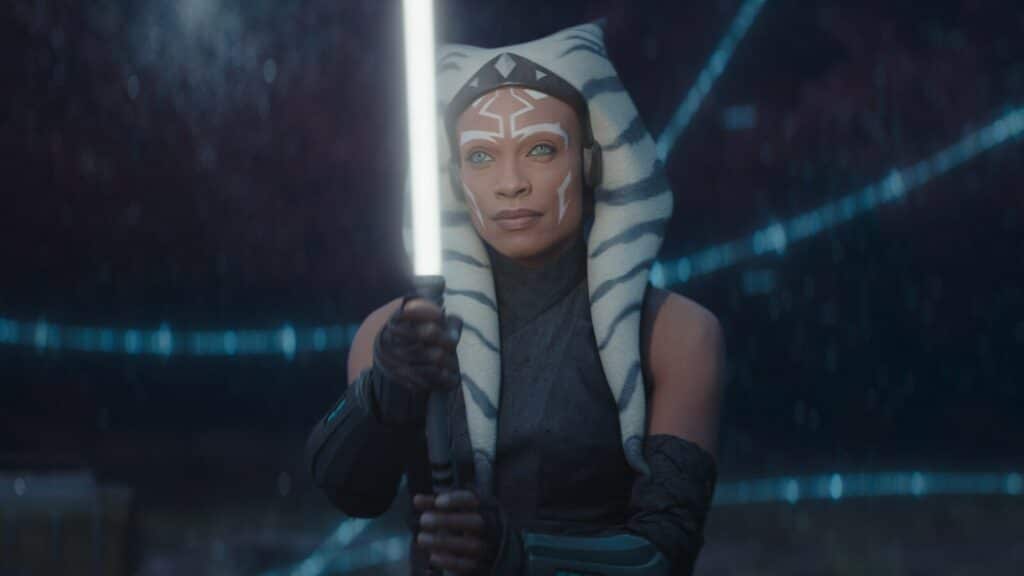
Conclusion: Ahsoka Tano – The Heart of Star Wars
Ahsoka Tano is more than just a character in the Star Wars universe—she’s a symbol of growth, independence, and resilience. From her early days as Anakin Skywalker’s headstrong Padawan to her emergence as a key player in the Rebellion and beyond, Ahsoka’s journey is a testament to her complexity and uniqueness. Whether as a Jedi, a mentor, or a lone warrior operating on the fringes of the galaxy, Ahsoka stands apart because she isn’t confined by traditional roles. She forges her own path, balancing the weight of her experiences with the wisdom she gains from them.
Her transition from animation to live-action, particularly with Rosario Dawson’s portrayal, has only strengthened her legacy, proving that Ahsoka’s story transcends mediums and generations. Her moral flexibility, rejection of the Jedi and Sith dichotomy, and deep connection to the Force make her one of the most compelling figures in the Star Wars saga.
As we look to the future, with the Ahsoka series on the horizon and her ongoing quest in the galaxy far, far away, Ahsoka Tano continues to inspire fans around the world. Her journey of self-discovery, her unyielding fight for justice, and her refusal to be defined by others ensure that Ahsoka will forever be remembered as one of the most iconic and unique characters in the Star Wars universe.



